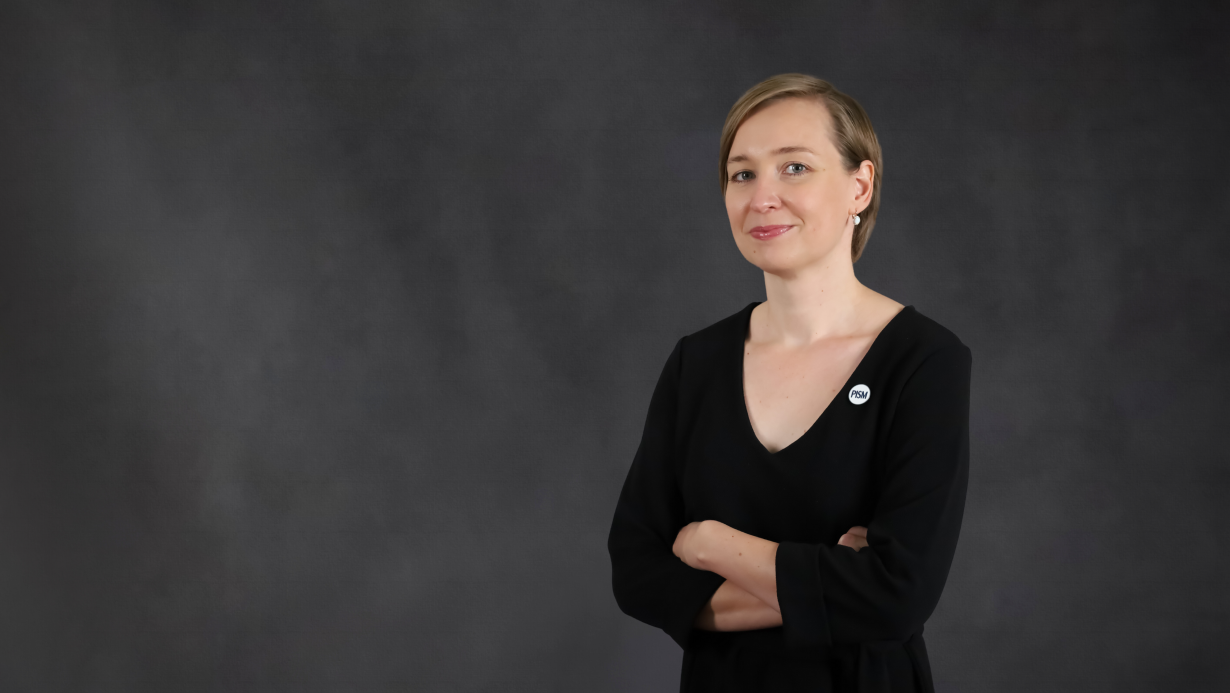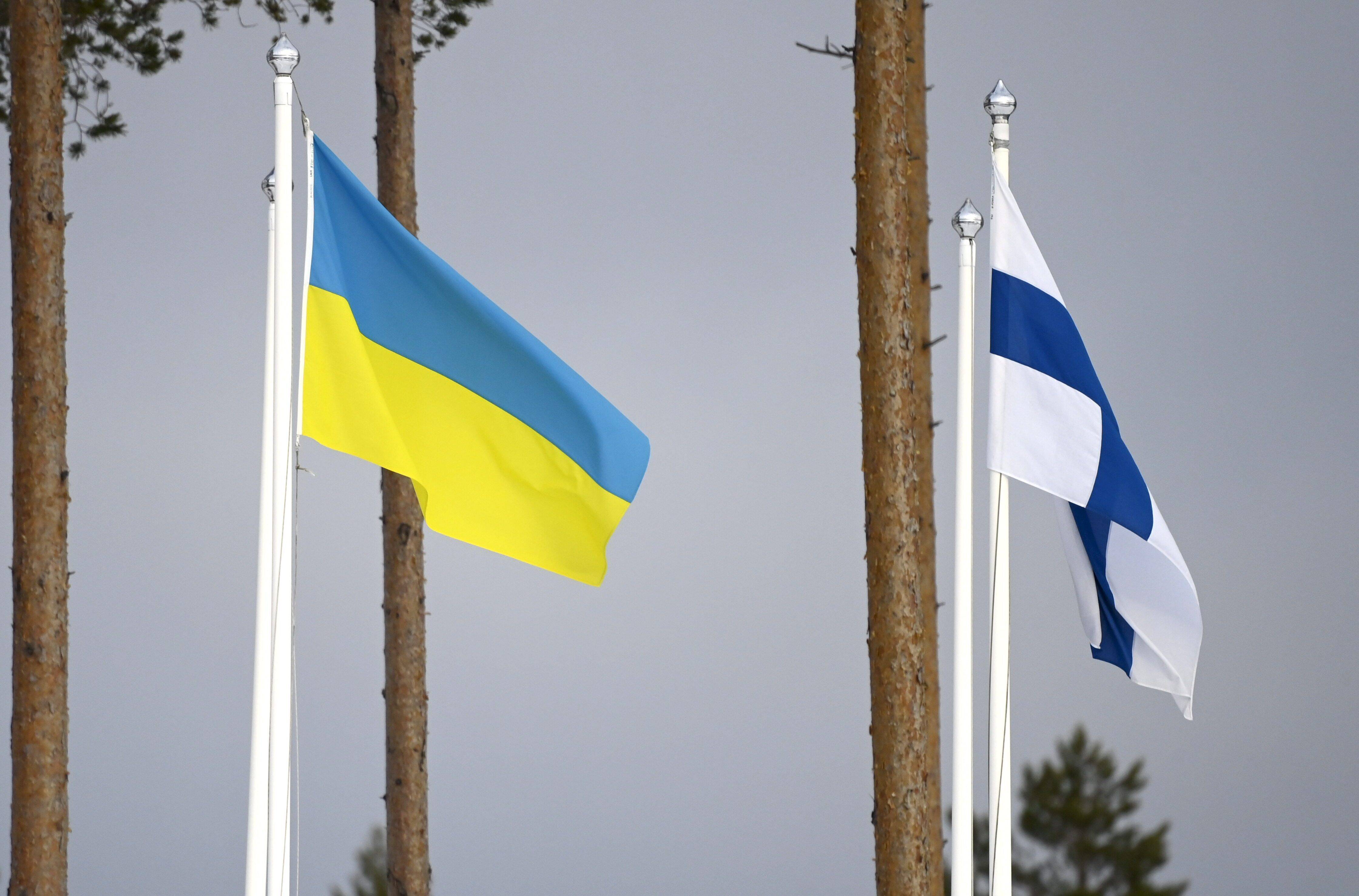The New Government in Finland will Grant Stable Support to Ukraine
In the new right-wing coalition government formed on 20 June, the centre-right, economically liberal National Coalition Party (Kokoomus) of Prime Minister Petteri Orpo plays a leading role. He succeeded Sanna Marin of the Social Democratic Party (SDP), who headed the centre-left cabinet. The entry of the nationalist Finns Party (PS) into the government will not reduce Finland’s commitment to help Ukraine. Furthermore, the new government will increase its activity in NATO. This aligns with Poland’s security policy goals, also in the Baltic Sea region.
.jpg) STAFF / Reuters / Forum
STAFF / Reuters / Forum
Finland’s Political Scene After the Elections
The parliamentary elections on 2 April were won by Kokoomus with 20.8% of the vote, giving it 48 seats in the 200-seat parliament (Eduskunta). PS and SDP came close to the winner with 20.1% (46 seats) and 19.9% (43 seats), respectively. The three largest parties strengthened compared to their results four years ago, while the smaller parties weakened. The agrarian Centre Party (11.3%, 23 seats), which was, among other parties, part of the right-wing government led by Kokoomus in 2015-2019 and also one of the SDP’s coalition partners in the past term, lost the most support. The Left Alliance (7.1%, 11), the Greens (7%, 13), the liberal Swedish People’s Party (SPP; 4.3%, 9), the Christian Democrats (CD; 4.2%, 5), the centre-right Movement Now (2.4%, 1), and a representative of Åland also entered parliament.
The main reason for the defeat of the SDP and Prime Minister Marin, who brought Finland into NATO and kept her popularity high until the end of her term, was the deteriorating economy (the centre-left coalition had been in power since 2019). It was the main theme of the campaign. Inflation at the beginning of the year was 8.8% due to high energy prices and other factors, which, combined with the high cost of maintaining the welfare state in an ageing society, were set to increase the deficit to 2.6% of GDP and the public debt to 76% of GDP this year (in 2019, they were 0.9% and 59.6%, respectively). Voters have set their sights on a return to conservative fiscal policy in this situation, with Kokoomus and PS promising to reduce the debt to 60% of GDP in one term.
Lasting seven weeks, Kokoomus’ talks to form a coalition with the PS, SPP, and CD covered 18 issues. Contentious topics included domestic affairs, mainly migration, as well as climate policies. The point of view of PS, whose president Riikka Purra will oversee internal affairs, won out—the new government will, among other measures, cut Finland’s annual refugee quota by half (to 500 people) and make it more difficult for migrants to obtain permanent residence permits and citizenship. Meanwhile, according to economists, the number of migrants would have to increase threefold year-on-year in the next decade for Finland to be able to cover its rising social spending. PS also pushed through its demand that the new authorities abandon the previous government’s ambitious climate plans, including further reductions in logging.
As there is a cross-party consensus in Finland on the important role of the EU in ensuring the country’s economic development and security, a continuation of existing European policies is likely. The new government will remain an advocate of restrictive fiscal policy and more efficient spending of common funds. For Orpo, a former finance minister, it is particularly important to justify direct transfers from the EU budget to Member States with added value for the EU as a whole. Also, with respect to the EU budget, Finland will continue to advocate for Member States’ compliance with the rule of law. It also will continue to be in favour of extending the use of qualified-majority voting in the Council on certain foreign and security policy issues, such as sanctions. At the same time, it will not oppose increasing funding of the common security policy. In the area of EU migration and asylum policy, its position will be voluntary relocation.
Security—a Breakthrough and Continuation
The past year has seen a turnaround in the country’s security policy, leading to accession to NATO in April this year. In practice, for Finland this represents an extension of its almost 30-year close partnership with the Alliance. The Finnish armed forces have taken part in a number of multinational military exercises and will continue to do so. In June alone, there was the Air Defender 23 exercises in Germany, Czechia, and the Netherlands involving the Finnish Air Force, the cross-border Arctic Challenge as part of the Nordic NORDEFCO cooperation, and a naval exercise in the Baltic Sea (BALTOPS 23).
According to the government’s programme, close cooperation with Nordic neighbours Sweden and Norway, as well as with the U.S. and the UK, will continue. In March, the Nordic countries signed a memorandum on air force integration. In autumn 2022, for the first time, 150 U.S. Marines exercised together with their Finnish counterparts from the Nylands brigade in Dragsvik for several months. Meanwhile, a further step in deepening relations with the UK was the signing of a defence cooperation agreement on 11 May 2022. This translated into, among other things, additional joint exercises and training of the Ukrainian armed forces.
Despite the established framework for defence cooperation and its intensification, the way public discourse around NATO membership is shaped will have a bearing on the degree of Finland’s commitment to the Alliance. Kokoomus, which has argued for accession over the years, will advocate high activity. It will be facilitated by the fact that the majority of political parties and about half of the public want to see a permanent NATO military presence in Finland. At the same time, with its entry into the Alliance, the country has decided that it will not allow the deployment of nuclear weapons on its territory but will take part in shaping the policy of nuclear deterrence. Furthermore, according to the position of a special national commission in May this year, the country should not participate in NATO nuclear deterrence exercises.
Orpo assures that its government will maintain support for Ukraine, where Finland has been sending substantial financial, humanitarian, and military aid since the beginning of the Russian invasion. At the end of May, the president approved the 16th arms package (totalling €1.1 billion). Political support is reflected by contacts at the highest level—President Sauli Niinistö and Prime Minister Marin visited Kyiv last year, and President Volodymyr Zelensky attended the Nordic-Ukraine summit in Helsinki in May. Moreover, Orpo believes that Ukraine’s place “in the long term” is in NATO and the EU, so it can be assumed that as prime minister he will promote that goal. Because Niinistö, who in Finland’s semi-presidential system directs foreign policy in cooperation with the government, also comes from Kokoomus, one should not expect any changes in the country’s objectives, including towards other countries and regions (presidential elections will take place on 28 January 2024).
PS, once open to cooperation with Russia, has moved away from this assumption after the invasion of Ukraine. The party also advocates limiting China’s influence in Europe. To give credibility to this change, it left the Identity and Democracy group in the European Parliament and rejoined the European Conservatives and Reformists (PS had been a member in 2014-2019). After its split in 2017, the party also softened its anti-EU rhetoric.
Conclusions
The Finnish political class is used to a compromise style of government in broad coalitions. The entry of PS into government will not radicalise Finnish politics (the party was already part of Juha Sipilä’s centre-right government in 2015-2017). Although this has translated into, among other things, stricter migration regulations, it will not affect Finland’s fulfilment of its Community obligations in this regard. The country has over the years emphasised the need to find an EU-wide compromise on the most difficult migration issues, including the solidarity mechanism.
Finland’s accession to NATO enhances the Alliance’s capabilities, especially its collective defence capabilities in the Baltic region and on NATO’s Northern Flank. At the same time, Finland seeks to deepen its bilateral and multilateral partnerships (with the U.S., the UK and the Nordic countries). Although the establishment of NATO bases in Finland is unlikely due to its proximity to Russia, the Finns already are showing a willingness to host NATO troops—permanently or temporarily—on their territory.
The convergent perceptions of the security situation around the Baltic Sea and in the Eastern neighbourhood, the above-standard assistance to Ukraine, and the agreement between Poland and Finland for the production and sale of Rosomak wheeled armoured personnel carriers, extended until 2028, bring the two countries closer. This creates favourable conditions for further strengthening the political partnership in the Baltic Sea region.





_sm.jpg)